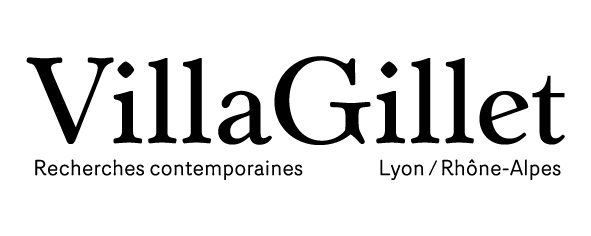«Living, Thinking, Looking» - A conversation with Siri Hustvedt
https://video.ens-lyon.fr/eduscol-cdl/2014/ANG_2014_shustvedt.mp4
Transcript of the interview (Hotel Carlton, Lyon, 20/05/2014)
Clifford Armion: Siri Hustvedt, you wrote quite a lot on writing and writing about the self. One of the points in your essays is that a human being, when he grows up and starts using pronouns, becomes a sort of character to his own self. A distance is created between the self and the representation of the self. Is it the same thing in literature when you use the “I”, when you write an autobiographical novel?
Siri Hustvedt: What I’m talking about in the essays is what is sometimes called 'reflective self consciousness.' It comes out of the ability in a child to recognise him or herself in a mirror. You’re able to see yourself as an other through the eyes of others. Without that I don’t think we could acquire language, and so writing novels or non-fiction or anything is always predicated on reflective self consciousness of some form or another. Otherwise we wouldn't have any representations. We wouldn’t be symbolic beings.
Clifford Armion: Is there a relation between the “I” of a character in a novel, a narrator, and the process of memory or the way we reconstruct our memories?
Siri Hustvedt: In this book, Living Thinking Looking, there’s an essay called “three emotional stories” and I quote myself, from an earlier essay in which I wrote “writing fiction is like remembering what never happened”. It is a strange thing to say but what I am arguing is that the faculty of memory and the faculty of imagination are in fact not so different. I do not mean that writers are dredging up the details of their own lives, that’s something very different. That happens: many writers use aspects of their autobiography or parts of their family life in novels. The French have a whole genre, autofiction, which is using the self as a character in a novel. But what I mean is quite different. How does a writer know when a story is right or wrong? Theoretically fiction has absolutely no boundaries. You can do anything you want. So the boundaries have to be somewhere else because I do have a very good idea when my story is right or wrong, when a character has to die, whether I like it or not. I think this is because the story is resonating at some profound emotional level. It is not about literal facts or actual events that took place in the past. That’s how all writers have to be able to guide a story, otherwise you’d be completely lost. The neuroscientist Antonio Damasio has a beautiful little phrase called ‘somatic markers’. These are emotionally coded in the brain. What happens is that in decision-making we’re not just guided by all the rational possibilities in the future, we’re also guided by emotional associations to past experiences. I think those somatic markers are also at work in making a work of fiction.
Clifford Armion: You mean that the writing process itself triggers of memories or images from the past?
Siri Hustvedt: They’re not literal memories but they have some emotional and visual resonance. Last night in the event I did here I quoted this beautiful thing Einstein said that I’ve quoted often. He was asked by Jacques Hadamard, the mathematician, “how do you work?” Einstein responded that his deep working processes had nothing to do with signs, either mathematical or linguistic, that his work was visual, muscular and emotional. I think that’s deep. Whether you are a physicist or a poet, that is what creativity is. It’s underneath. Only the flowering of those visual, muscular and emotional realities are different of course.
Clifford Armion: What about the process of oblivion or forgetting? Does it have a parallel in writing?
Siri Hustvedt: Forgetting is a really interesting phenomenon of course because we know that we forget but the contents of that forgetfulness, all the amnesia that we have accumulated, is fascinating. It is entirely possible that if you believe in the mechanism of repression, some people do some people don’t... Freud had this idea of censorship. There’s a censor standing at the door between the unconscious and the conscious. There are people who are non-freudians who also believe that there are mechanisms of repression. I have a tendency to be in the repression direction. I think it is possible, in writing fiction, that the repressed surfaces, without actually knowing much about it and that there are certain repressed parts of the self that are allowed exit.
Clifford Armion: A bit like in the dream world then?
Siri Hustvedt: Yes. I’ve often thought that writing fiction has a connection to dreaming, that it’s a little bit similar to dreaming while awake.
Clifford Armion: Just one last question. Why do you think the genre of the memoir or the autobiographical novel is so popular nowadays?
Siri Hustvedt: I think part of it has to do with a cultural error and that cultural error is that people have a tendency to fixate more on what they conceive of as real than imaginary. Reality seems to have this deep ground that is more reliable than the imagination. I think that’s not true. Our memories are not facts. Our memories are shifting; they are constantly being reedited and reconsolidated in our brains. The fantasy of the real story is not a very good one.
Clifford Armion: Do you think a reader can sense a difference between a fictitious autobiography, like the ones written in the eighteenth century, and an actual memoir?
Siri Hustvedt: No and in fact there have been some memoir scandals in the United States that I wrote about in the book. What is funny about some of them is that at least in one case the writer made his life more horrible, more scandalous and more lurid than was in fact the case. Of course the sources for this were in the eighteenth century stories, both real and fictional stories which were very lurid and very popular. This goes on. That’s part of what human beings like to consume. We like that, it’s racy and exciting, murder and adultery and sex. It’s something people can’t get enough of. In the form of a text we’re safe. There’s a beautiful thing that Ernst Kris, the psychoanalyst, talked about: the ‘aesthetic allusion’. I then took that up and talked about the ‘aesthetic barrier’. I now have a new phrase which I think is better, the ‘aesthetic frame.’ The aesthetic frame prevents those lurid and dangerous characters from leaping out of the book and attacking you, but you get to have these exciting emotional experiences without fearing for your own safety.
Pour citer cette ressource :
Siri Hustvedt, Clifford Armion, Living, Thinking, Looking - A conversation with Siri Hustvedt, La Clé des Langues [en ligne], Lyon, ENS de LYON/DGESCO (ISSN 2107-7029), août 2014. Consulté le 01/01/2026. URL: https://cle.ens-lyon.fr/anglais/litterature/les-dossiers-transversaux/theories-litteraires/living-thinking-looking-a-conversation-with-siri-hustvedt



 Activer le mode zen
Activer le mode zen

